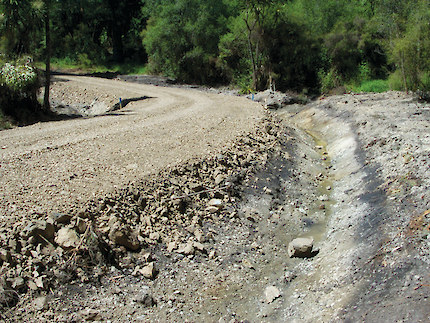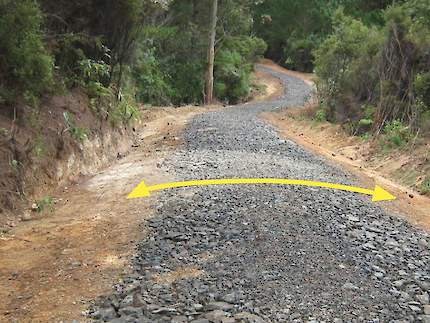Ditches protect the road by directing water off it. They also strengthen the road by keeping the subgrade drier.

- The ditch is deep, so helps drain the subgrade

- The ditch has been rock armoured to reduce erosion on a steep road section in a known problem area

- The road has enough crossfall (camber) to direct water into the drains
- The ditch can easily catch groundwater flow from the cut bank
- Water volume and speed have been reduced by regular cut-outs to help prevent erosion and sediment loss

- The ditch has scoured out because it was forced to handle too much water that was flowing too fast
- The spacing between culverts was too far apart
- Too much water on a steep road can quickly cause road failure